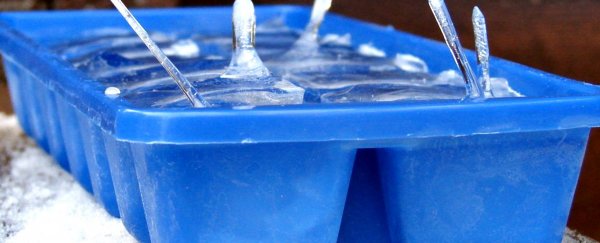
If you've ever made ice, you've more than likely wondered why you often end up with frozen spikes sticking ominously out of your ice cubes. Contrary to what you might read in the YouTube comments, don't worry, these aren't supernatural in origin. In fact, they're the result of a very simply physical process that also makes it possible for life to survive on Earth, as Derek Muller explains in the latest episode of Veritasium.
So why do they form? It all comes down to the fact that water expands by around 8 percent as it cools. In your freezer, ice crystals first form around the outside edges of your cube, where the water molecules have the most contact with the cold air. As this ice expands around the outside, it forces the remaining liquid water inwards, until it no longer has anywhere to go but up and out. As this escaping water makes contact with the freezer air, the outside molecules quickly freeze and expand, and the spike keeps getting long and longer until it freezes shut at the end - it's a process that's kind of hard to explain in writing, but you can see a great illustration of it in the video above.
But why are these water escape routes always so spiky and knife-like? The triangular shape of the spikes - or ice stalagmites, as they're sometimes called - forms because ice crystals tend to meet at 60-degree angles.
You can easily create your own ice spikes at home, by using a freezer that's not too cold (between -5 and -8 degrees Celsius is ideal) and distilled water. A fan in the freezer helps, too, according to Derek. If you live somewhere cold, you might even be lucky enough to see some huge spikes, also known as ice vases, form in bird baths and other larger pools of water during winter.
But perhaps the coolest thing about these ice spikes is that, if they didn't form, it would mean that water didn't expand when it froze, and then life on Earth as we know it may very well not exist. Watch the episode of Veritasium above to find out why.
